Induction Annealing Stress Relieving
Views Send Enquiry
 STRESS RELIEVING,NORMALISING AND ANNEALING
STRESS RELIEVING,NORMALISING AND ANNEALING
Stress Relieving
Stress relieving is applied to both ferrous and non-ferrous alloys and is intended to remove internal residual stresses generated by prior manufacturing processes such as machining, cold rolling and welding. Without it,
subsequent processing may give rise to unacceptable distortion and/or the material can suffer from service
problems such as stress corrosion cracking. The treatment is not intended to produce significant changes in
material structures or mechanical properties, and is therefore normally restricted to relatively low temperatures.
Carbon steels and alloy steels can be given two forms of stress relief:
(1) Treatment at typically 150-200°C relieves peak stresses after hardening without significantly reducing hardness
(e.g. case-hardened components, bearings, etc.):
(2) Treatment at typically 600-680°C (e.g. after welding, machining etc.) provides virtually complete stress relief.
Non-ferrous alloys are stress relieved at a wide variety of temperatures related to alloy type and condition. Alloys
that have been age-hardened are restricted to stress relieving temperatures below the ageing temperature.
Austenitic stainless steels are stress relieved below 480°C or above 900°C, temperatures in between reducing
corrosion resistance in grades that are not stabilised or low-carbon. Treatments above 900°C are often full solution anneals.
Normalising Applied to some, but not all, engineering steels, normalising can soften, harden or stress relieve a
material, depending on its initial state. The objective of the treatment is to counter the effects of prior processes, such as casting, forging or rolling, by refining the existing non-uniform structure into one which enhances
machinability/formability or, in certain product forms, meets final mechanical property requirements. A primary
purpose is to condition a steel so that, after subsequent shaping, a component responds satisfactorily to a
hardening operation (e.g. aiding dimensional stability). Normalising consists of heating a suitable steel to a
temperature typically in the range 830-950°C (at or above the hardening temperature of hardening steels, or above
the carburising temperature for carburising steels) and then cooling in air. Heating is usually carried out in air, so
subsequent machining or surface finishing is required to remove scale or decarburised layers.
Air-hardening steels (e.g. some automotive gear steels) are often “tempered” (subcritically annealed) after normalising to soften the structure and/or promote machinability. Many aircraft specifications also call for this combination of treatments. Steels that are not usually normalised are those which would harden significantly during air cooling (e.g. many tool steels), or those which gain no structural benefit or produce inappropriate structures or mechanical properties (e.g. the stainless steels).
Annealing
The primary purpose of an annealing treatment is to reduce the hardness of a material and facilitate the
progress of subsequent manufacturing operations. Annealing is commonly used after casting, forging or
rolling to soften materials and minimise residual stresses, improve machinability, and increase ductility by carefully controlling the microstructure. Many steels in strip form are annealed, as are most tool steels and stainless steels. Non-ferrous alloys are also annealed. There are several process variations that qualify as annealing treatments:
• Full annealing is performed on steels by heating to a high temperature (typically 830-950°C), then cooling
slowly to ambient temperature. Non-ferrous materials are softened and refined by full annealing at temperatures appropriate for each alloy.
• Isothermal / cyclic annealing is performed by heating steels to the full annealing temperature, cooling to an
intermediate temperature (typically 550-700°C) and soaking for a long period to allow transformation to
proceed slowly, followed by cooling to ambient temperature.
• Intercritical annealing is applied by heating steels to below the full annealing temperature (typically 723-
910°C) according to composition. A prolonged soak is followed by cooling to ambient temperature.
• Subcritical annealing takes place at a temperature for steels of typically 650-720°C, allowing a prolonged soak before cooling to ambient temperature.
• Homogenisation annealing can be applied to both ferrous and non-ferrous materials and is a prolonged
high-temperature soak intended to break down segregation in the material’s structure.
• Solution annealing is applied commonly to austenitic stainless steels, typically at 1010-1150°C. With
unstabilised grades, the treatment must be followed by fast cooling or quenching. It is applied as a softening
process during manufacture or to optimise corrosion resistance (e.g. after welding).
WHAT ARE THE BENEFITS?
Stress relieving, normalising and annealing all prepare metals and alloys for further processing or for the
intended service conditions. They control the ability of materials to be machined with ease, perform without
distortion in service, be formed without cracking or splitting, be subsequently hardened or carburised with
minimal distortion, or to resist corrosive environments.
WHAT SORT OF MATERIALS CAN BE TREATED?
All commercial alloys can be annealed and stress relieved. Normalising is restricted to certain steels for the
reasons indicated above.
WHAT ARE THE LIMITATIONS?
• Stress relieving of carbon or low-alloy steel fabrications is frequently the last heat treatment applied, so it must
be ensured that the mechanical properties of the materials treated will not be adversely affected.
• Stress relieving between machining operations can be
performed on pre-treated material. The stress relieving effectiveness may have to be reduced to prevent loss
of mechanical properties.
• Many austenitic stainless steels require fast cooling after high-temperature stress relief or solution
annealing. A degree of distortion or reintroduction of residual stresses is inevitable in such cases.
• The size and shape of items that can be stress
relieved, annealed or normalised depends on the type of equipment operated by the heat treater. For large
items, check the availability of suitably-sized facilities at an early stage.
WHAT PROBLEMS COULD ARISE?
• Most stress relieving operations are carried out in air, but protective media are also available. In air, alloys are subject to discolouration or scaling depending on the alloy and temperature used. Post-treatment cleaning may therefore be required.
• Normalising is usually performed in air on semifinished steel products where scaling and decarburisation pose no problems because they are removed by subsequent machining. A protective medium may sometimes be necessary; e.g. when normalising final-size products prior to localised surface hardening.
• Annealing processes can take place in air or in protective media such as molten salt, controlled gaseous atmospheres or vacuum. Prolonged soaks, as required by some annealing operations, necessitate the selection of a protective medium.
• There is always a risk of distortion/sagging when high-temperature treatments are applied to vulnerable
thin-wall vessels or large, heavy components. Your heat treater may have to use special supports or fixtures to combat this problem.
HOW DO I SPECIFY?
All of the following information should be included if possible. If uncertain, ask your heat treater before producing a specification:
• The process required: this could be stress relieve, normalise or anneal; indicate if bright treatment is necessary, or if treatment in air is satisfactory.
• Material type, grade, and the standard from which it is drawn, with drawing, composition and mill certificate
where available.
• Any general standards applicable (national, international or company) that contain relevant details which
must be adhered to.
• Existing condition; e.g. details of any prior heat treatment, such as hardening and tempering, solution treatment and ageing, intended to establish mechanical or other properties.
• The level of mechanical properties required. Generally a hardness range or tensile strength range
can be quoted from the standard being worked to. It is not possible to meet a specific figure due to the
variables outside the heat treater’s control (e.g. in annealing to remove the effects of severe cold work). A
maximum hardness level is often requested for normalised or annealed materials. Standards such as
BS 10083-1 and BS 970 provide information for some steels.
• The type(s) of testing required; e.g. hardness (Vickers, Brinell), tensile etc. and any special locations for testing or the removal of samples for test pieces.
• Requirements for any special certificates or data to be provided by your heat treater.
• Other services required; e.g. straightening (with working limits), cleaning/blasting, laboratory or specialised NDT services etc.
WHERE DO I GO?
In order to locate heat treaters offering stress relieving, normalising or annealing services, consult the current
edition of UIHM’s Buyers Guide. It is advisable to involve your heat treater at an early stage.
Related Content
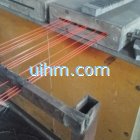
induction annealing 1mm to 2mm steel wire online by 200KW MF induction heater
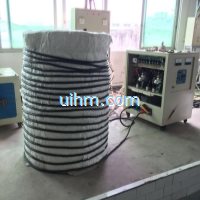
induction heating steel pipe by flexible water cooled induction coil
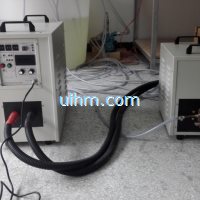
induction annealing with U shape double ear induction coil
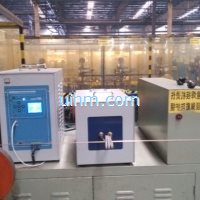
induction annealing steel strip online
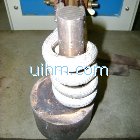
induction heating steel rod by UM-40AB-HF
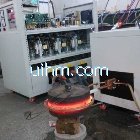
induction debonding from steel rod

induction quenching head and end part of steel rod (axle)
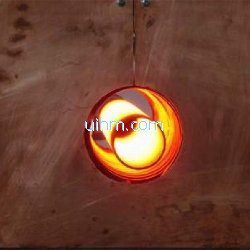
induction annealing for stainless pipe
Hot

induction annealing 1mm to 2mm steel wire online by 200KW MF induction heater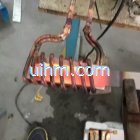
induction annealing SS-Steel knife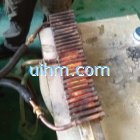
induction annealing copper plate
induction heating steel pipe by flexible water cooled induction coil
induction annealing with U shape double ear induction coil
induction annealing steel strip online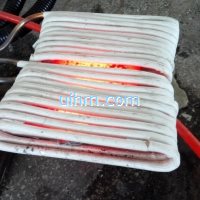
induction annealing with large parallel induction coil
induction annealing steel plate by U shape double ear induction coil

Newest Comment
No Comment
Post Comment